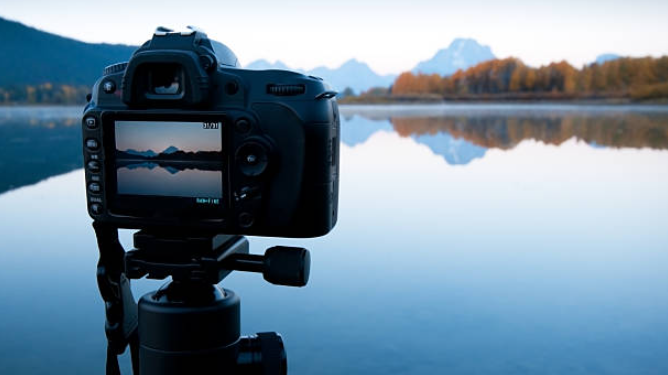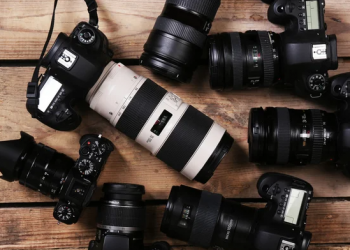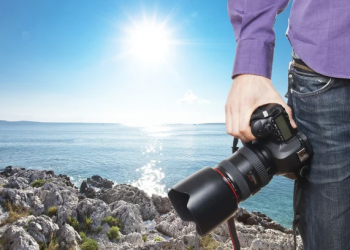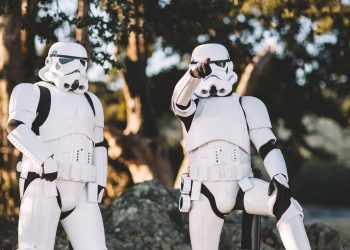Photography is a wonderful art form that allows us to capture and preserve memories, tell stories, and express ourselves creatively. Whether you are an amateur photographer or a professional, there are always ways to improve and take better photographs. In this article, we will discuss a variety of tips and techniques that you can use to elevate your photography skills and capture stunning images with any camera. From mastering the rule of thirds to finding a unique perspective and learning about your camera’s settings, these tips will help you take your photography to the next level. So if you are ready to take your photography skills to new heights, read on for our top tips for taking better photographs with any camera.
Use the rule of thirds
One of the most basic yet effective compositional techniques is the rule of thirds. This involves mentally dividing your frame into nine equal parts using two equally-spaced horizontal lines and two equally-spaced vertical lines. The theory is that if you place your subject along these lines, or at the intersections of them, your photo will be more balanced and will have more visual interest. This is because the human eye naturally gravitates toward these points of interest.
Pay attention to the lighting
Lighting can make or break a photograph. It can add drama, create mood, and highlight your subject. When taking a photograph, consider the direction of the light and how it is illuminating your subject. Is the light too harsh and creates deep shadows? Is it too soft and causing your subject to blend into the background? Experiment with different lighting conditions and angles to see how it impacts your final image.
Use a tripod
A tripod can be a valuable tool for taking better photographs, especially in low-light situations or when you want to capture a long exposure. A tripod will help steady your camera and prevent camera shake, resulting in sharper images. If you don’t have a tripod, you can also try leaning against a wall or using a flat surface to steady your camera.
Experiment with different focal lengths
The focal length of a lens refers to how zoomed in or out it is. A wide-angle lens has a shorter focal length and is great for capturing sweeping landscapes or architecture. A telephoto lens has a longer focal length and is ideal for isolating your subject and getting close-up shots. Experimenting with different focal lengths can help you create a variety of compositions and perspectives.
Edit your photos
Even the most carefully composed and well-lit photograph can benefit from a little post-processing. Basic edits like adjusting the exposure, contrast, and white balance can make a big difference in the final image. More advanced edits like retouching blemishes or adjusting the colors can help bring your vision to life. Just be sure not to overdo it – the goal is to enhance your photo, not to create something that looks unnatural.
Overall, the key to taking better photographs is to experiment, pay attention to detail, and keep practicing. With time and practice, you will develop your own unique style and become more confident in your ability to capture stunning images with any camera.
Find a unique perspective
One way to make your photos stand out is to try and find a unique perspective or vantage point. This could be shooting from a high angle or a low angle, getting close to your subject, or shooting from far away. Think outside the box and try to find a perspective that hasn’t been seen before.
Learn about your camera’s settings
Your camera is a powerful tool that can help you capture the perfect shot, but only if you know how to use it. Take the time to familiarize yourself with your camera’s settings, including the aperture, shutter speed, and ISO. Each of these settings plays a role in the final exposure of your photograph, and learning how to control them will give you more flexibility and creativity in your photography.
FAQs:
Q1. What is the rule of thirds and how does it help with photography?
A. The rule of thirds is a compositional technique that involves dividing your frame into nine equal parts using two equally-spaced horizontal lines and two equally-spaced vertical lines. The theory is that if you place your subject along these lines, or at the intersections of them, your photo will be more balanced and will have more visual interest. This is because the human eye naturally gravitates toward these points of interest.
Q2. How can lighting impact a photograph?
A. Lighting can have a huge impact on a photograph. It can add drama, create mood, and highlight your subject. When taking a photograph, consider the direction of the light and how it is illuminating your subject. Experiment with different lighting conditions and angles to see how it impacts your final image.
Q3. What is the purpose of using a tripod?
A. A tripod is a tool that helps steady your camera and prevent camera shake, resulting in sharper images. It is especially useful in low-light situations or when you want to capture a long exposure. If you don’t have a tripod, you can also try leaning against a wall or using a flat surface to steady your camera.
Q4. How can changing the focal length affect a photograph?
A. The focal length of a lens refers to how zoomed in or out it is. A wide-angle lens has a shorter focal length and is great for capturing sweeping landscapes or architecture. A telephoto lens has a longer focal length and is ideal for isolating your subject and getting close-up shots. Experimenting with different focal lengths can help you create a variety of compositions and perspectives.
Q5. Is post-processing necessary for good photographs?
A. Post-processing, or editing, can be a helpful tool for enhancing your photographs. Basic edits like adjusting the exposure, contrast, and white balance can make a big difference in the final image. However, it is important not to overdo it – the goal is to enhance your photo, not to create something that looks unnatural.
Conclusion:
Taking better photographs with any camera is all about experimentation, attention to detail, and practice. By using the rule of thirds, paying attention to lighting, using a tripod, experimenting with different focal lengths, and editing your photos, you can elevate your photography skills and capture stunning images. Don’t be afraid to try new things and push yourself out of your comfort zone – this is where growth and improvement happen. With time and dedication, you will become more confident in your ability to capture beautiful photographs with any camera.






